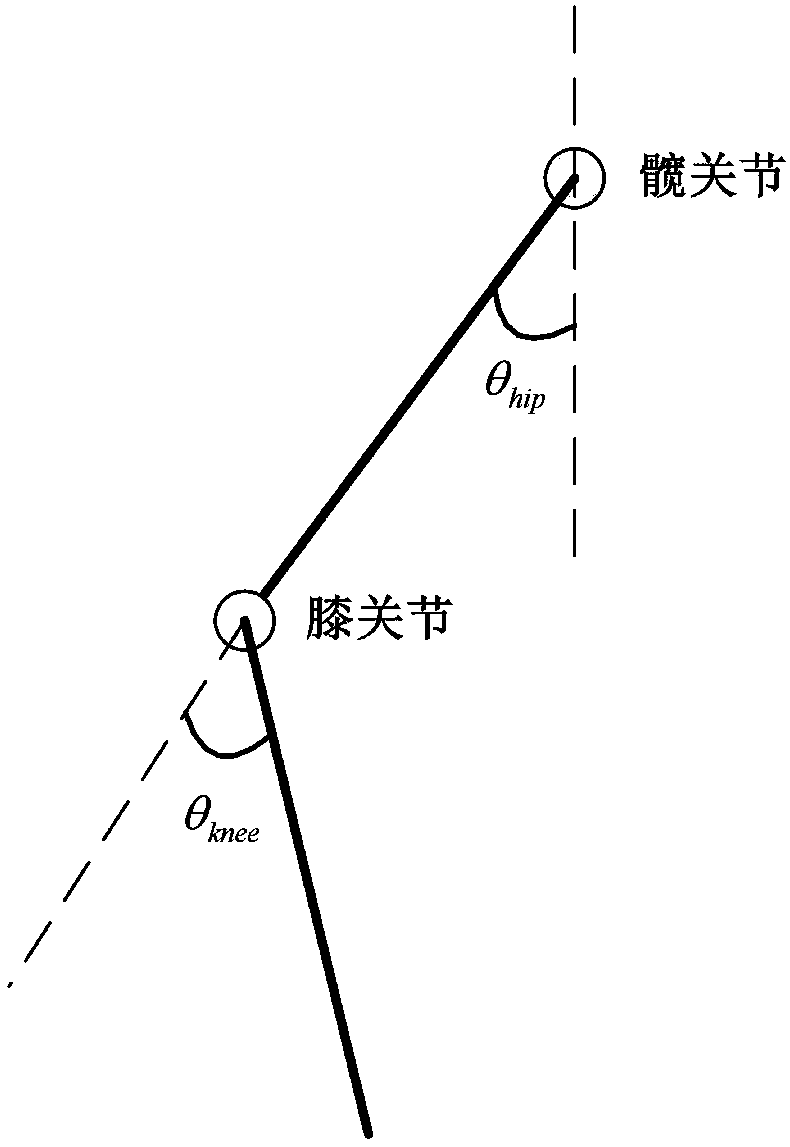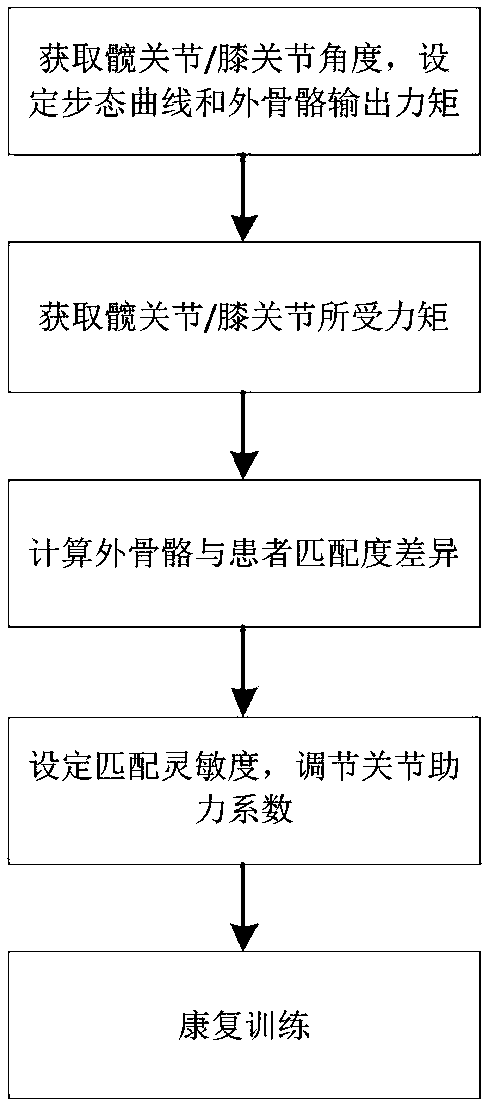Direct-driven rehabilitation exoskeleton and training method
A technology of rehabilitation training and training method, which is applied in the field of rehabilitation, can solve the problems of patients with strain, rehabilitation treatment can not achieve the optimal effect, and the error of measuring torque is large, so as to improve the effect of training
- Summary
- Abstract
- Description
- Claims
- Application Information
AI Technical Summary
Problems solved by technology
Method used
Image
Examples
Embodiment Construction
[0047] The present invention will be further explained below in conjunction with the drawings:
[0048] Such as figure 1 As shown, a direct-drive rehabilitation exoskeleton of the present invention includes a frame 5, a hip joint torque motor 1, a thigh exoskeleton 2, a knee joint torque motor 3, and a calf exoskeleton 4. The upper ends of the two thigh exoskeletons 2 are respectively Two hip joint torque motors 1 are rotatably connected to the two ends of the frame 5, and the upper ends of the two calf exoskeletons 4 are rotatably connected to the lower ends of the two thigh exoskeletons 2 through two knee joint torque motors 3, respectively. The joint torque motor 1 and the knee joint torque motor 3 are both permanent magnet synchronous torque motors, and the permanent magnet synchronous torque motors are servo controlled by a servo driver.
[0049] Two permanent magnet synchronous torque motors are used to directly drive the hip joints of the rehabilitation exoskeleton, and two...
PUM
 Login to View More
Login to View More Abstract
Description
Claims
Application Information
 Login to View More
Login to View More - R&D
- Intellectual Property
- Life Sciences
- Materials
- Tech Scout
- Unparalleled Data Quality
- Higher Quality Content
- 60% Fewer Hallucinations
Browse by: Latest US Patents, China's latest patents, Technical Efficacy Thesaurus, Application Domain, Technology Topic, Popular Technical Reports.
© 2025 PatSnap. All rights reserved.Legal|Privacy policy|Modern Slavery Act Transparency Statement|Sitemap|About US| Contact US: help@patsnap.com



